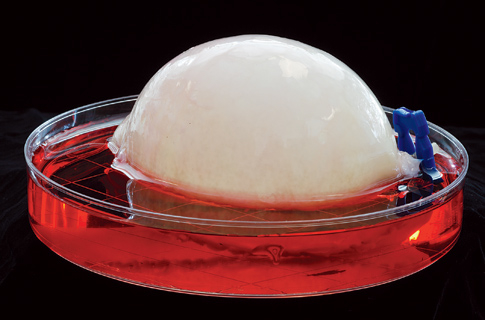Anthony Atala, M.D., director of the Institute for Regenerative Medicine at Wake Forest University School of Medicine was able to announce in May 2006 that the first human to ever receive a bio-engineered organ had a successful experience. The laboratory grown organ was transplanted in 1999 after nine years of research and was grown from the individual's very own cells.
Which organ was grown you ask? One that we consciously use 6-7 times per day, our bladder.
“This is one small step in our ability to go forward in replacing damaged tissues and organs,” said Atala, who is now working to grow 20 different tissues and organs, including blood vessels and hearts, in the laboratory.
The recipients? Young generations between the ages of 4 to 19 with malfunctioning bladders due to a birth defect which caused frequent urine leakage. The bladders were grown in hopes to be able to supply for people in need of a transplant when organ donates became limited. These experimental patients have been followed for up to seven years and have shown signs of improvement over time.
“We wanted to go slowly and carefully and make sure we did it the right way,” said Atala. “This is a small, limited experience, but it has enough follow-up to show us that tissue engineering is a viable tool that will allow us to tackle problems of similar magnitude.”
How were the bladders made? Muscle and bladder lining cell samples were taken from each patient and grown in a culture within the laboratory. Once the cells multiplied into a large enough specimen, they were placed into a biodegradable mold, shaped like a bladder. The cells continued to grow and within seven or eight weeks they were ready to be connected to the patient's original bladder through a surgical procedure. The mold was designed to degrade once the bio-engineered cells integrated into the original bladder creating a stronger bladder lining. This came with no ill side effects unlike the previous medical procedure of using intestinal lining before bio-engineering was introduced.
“We have shown that regenerative medicine techniques can be used to generate functional bladders that are durable,” said Atala. “This suggests that regenerative medicine may one day be a solution to the shortage of donor organs in this country for those needing transplants.”
The bio-engineering future carries hopeful, life altering possibilities for health care around the world.
